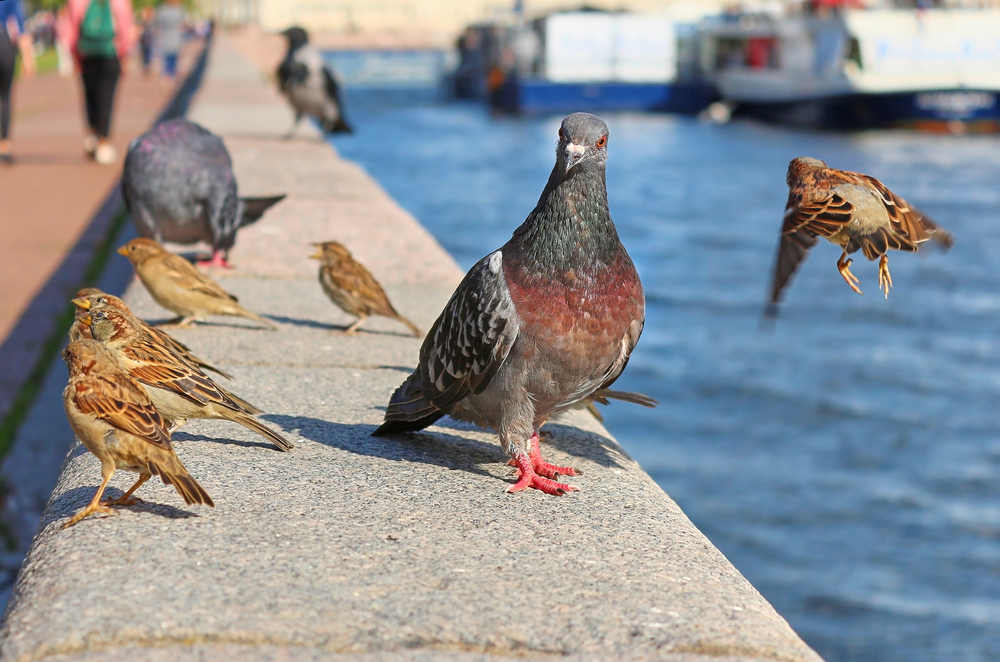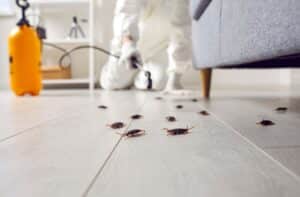Especially during seasons like spring and the fall period we’re currently in, many birds migrate between northern and southern regions, finding new places to nest and protect their young. And while the vast majority of these birds are protected from hunting, poaching and other forms of population control, there are a few specific species that are known to be so damaging to properties that they are actually classified as pests, with very different rules and regulations covering them.
At A-1 Exterminators, we’re proud to offer several home bird control options, from Bird Barrier products and other forms of commercial deterrence to bird control for your solar panels and much more. Many of our products focus primarily on these three broad bird types: Pigeons, sparrows and starlings. Let’s go over why these birds are unique in the way they’re classified, how they’re considered pests, some identifying traits of each, and the damage you risk if you aren’t controlling these populations on your property.
Federal Migratory Bird Treaty Act
Passed in 1918, the Federal Migratory Bird Treaty Act is one that was meant to combat the rapid decline of certain migratory bird populations. Due to excess hunting and poaching that was taking place at the time, these bird populations were in critical danger and this act sought to protect them.
And while this Act covered, and continues to cover, a variety of different bird types, the three we mentioned above — pigeons, starlings and sparrows — are exceptions. They are considered pests, largely due to their vast population sizes, and because of the damage they can cause to properties when nesting. For this reason, they are not federally protected from population control, including forms of bird-related pest control like trapping or elimination.
Let’s go over each individual species to learn more about them.
Pigeons
Perhaps the most well-known of these birds are pigeons, which are typically roughly a foot in length and weigh about thirteen ounces on average. Pigeons are blue-grey in color, with some white or silver spots on their wings. They are typically not very picky eaters, eating whatever they can find that is digestible.
They are typically found in large numbers in cities, where there is an abundance of human-based food sources to keep them full. They tend to nest in smaller, flat areas that are raised off the ground, like rooftops and window ledges, and will usually eat on the ground, also.
Pigeons have a breeding cycle that runs year-round, with egg-laying beginning in late February or early March and lasting through October, with nesting taking place three times during this time. And while it’s not unheard of for pigeons to live up to 15 years in the wild, they typically only live between five and eight years on average due to predation by larger birds like hawks or cats, as well as human-based hazards like traffic.
Pigeons will travel up to five miles between their nesting and roosting sites, which means it can be difficult to get a larger flock to move on. They have homing capabilities that allow them to return easily to their nests, which means preventing nesting in the first place is usually your best course of action when addressing a pigeon infestation.
Sparrows
Sparrows belong to a large family of birds known as weaver flinches, and are significantly smaller than pigeons — usually about five to six inches in length, with a weight of only about one ounce. They are identifiable due to their short bills and legs, as well as the brown color they are typically sporting.
These birds are very common, particularly in rural areas or open fields, where their nests can be found on the ground more often than not. They’re also not typically picky eaters, but some types of sparrows will be attracted to gardens with feeders.
Sparrows will build nests out of just about anything they can find, and tend to nest in raised areas that allow them a degree of protection from predators, like trees or bushes. They usually only live about five years in the wild, but some have been known to make it past their fifth birthday if they’re raised in captivity and can avoid predation. Their breeding cycle runs from March through early August in most cases, and they lay four to six eggs per mating period.
However, sparrows have become highly dependent on humans and human property for both food and shelter. This means that once they’ve found a nesting location where they receive these needs, they reproduce very quickly and can be hard to control. For this reason, proper bird control products are vital if even a few sparrows have begun nesting in your area.
Starlings
Finally, one of the most invasive bird species on the planet is the starling, which is classified as a pest due to its destructive nature. About the same size as sparrows (or slightly larger in some cases), starlings are identifiable by their black feathers and ‘hair-like’ filaments on the end of their tail feathers, plus by their long and pointed bills that are dark during winter and yellow during summer.
Starlings will nest in both urban and rural areas, and typically do so in trees, exhaust vents, or other vertical areas that are surrounded by foliage. They will also sometimes make their nests in vehicles, like cars and planes, where there is less chance of predation (and may even rid an area of other smaller birds like sparrows).
Starlings lay multiple eggs at a time, usually between five and 12 every mating period — something that can last from February through June. They’re a problem due not only do the major damage they cause, but also due to their noise levels — they congregate in huge groups and are extremely loud, plus are aggressive in targeting other bird species.
For more on why certain specific birds are considered pests, or to learn how to identify and prevent any risks they may pose, speak to the staff at A-1 Exterminators about our bird control products today.



